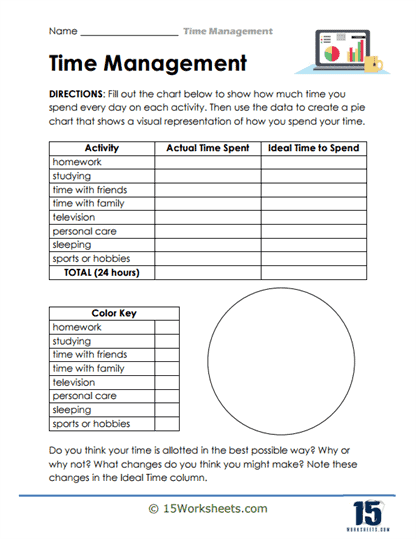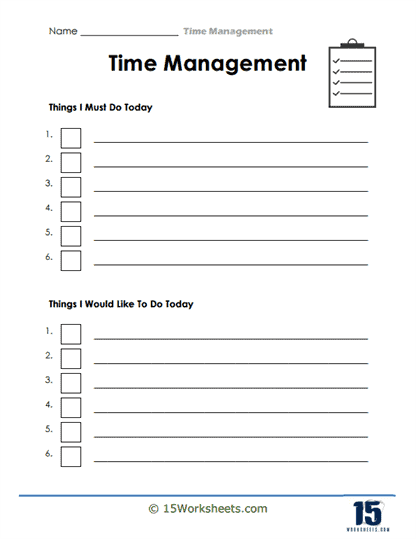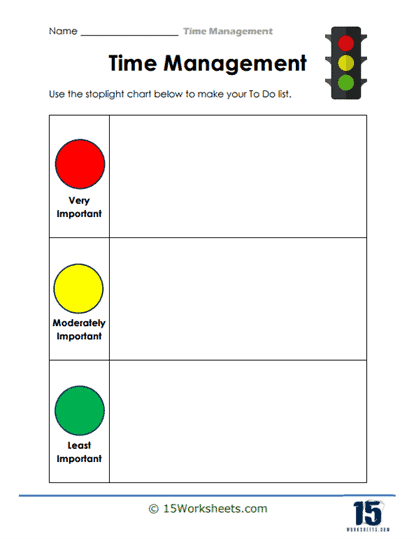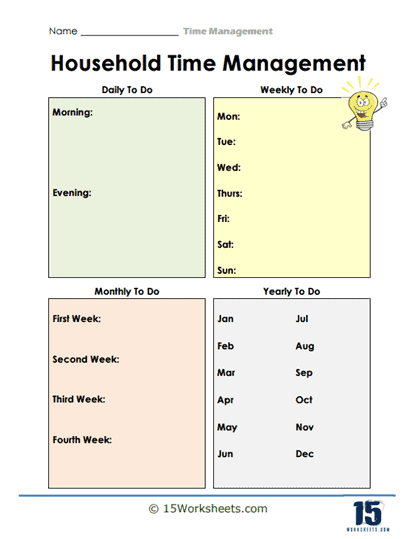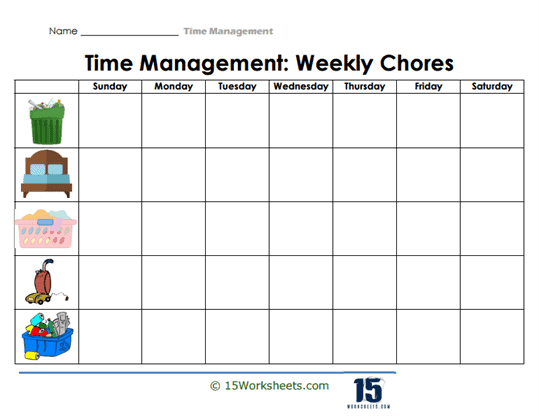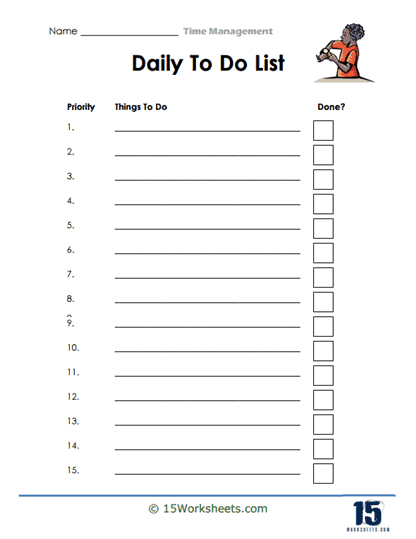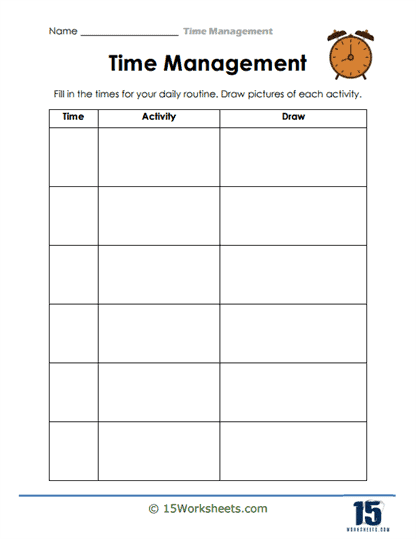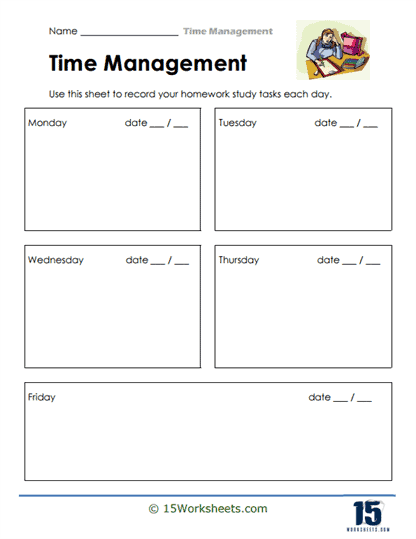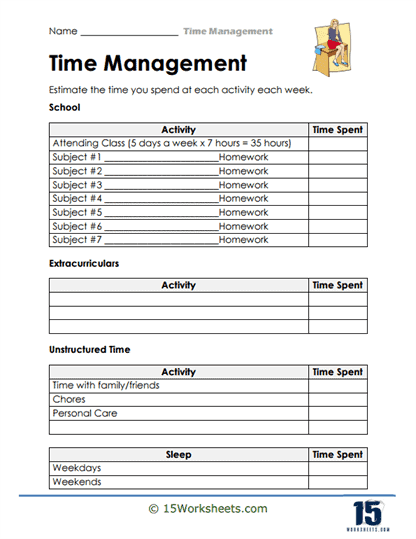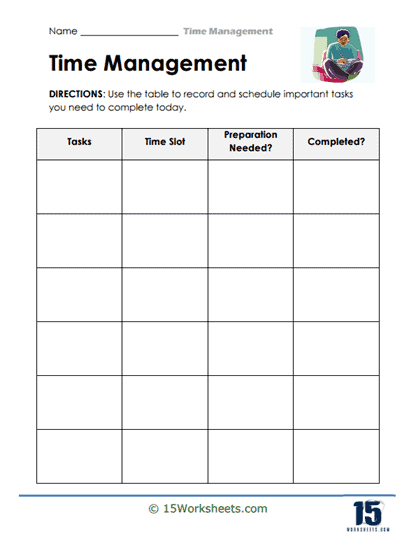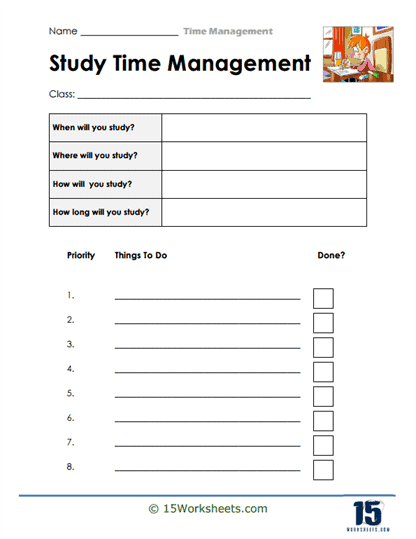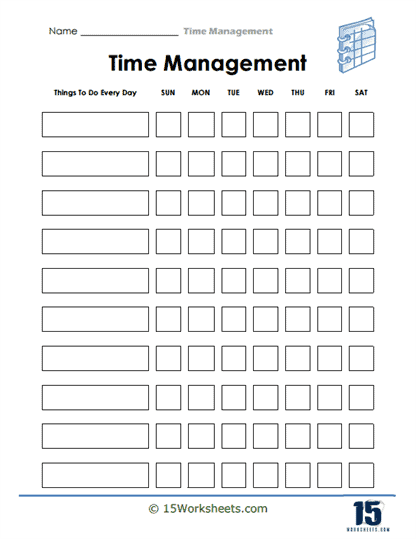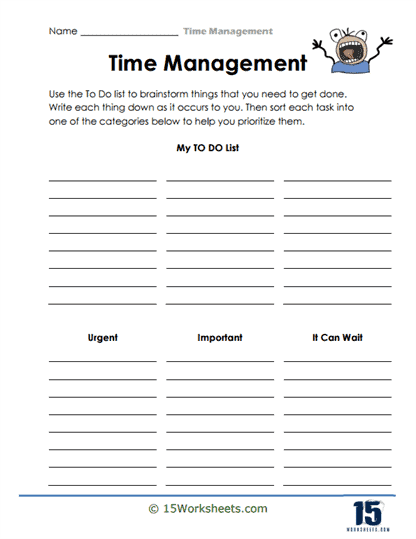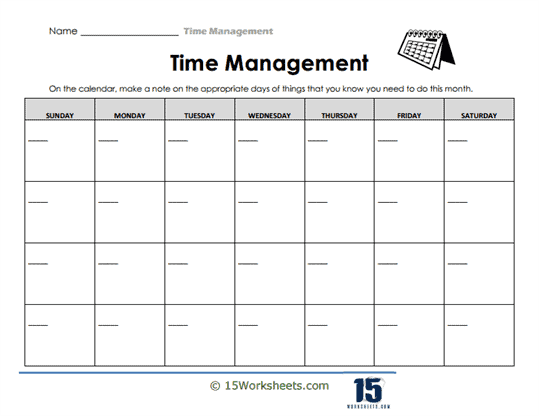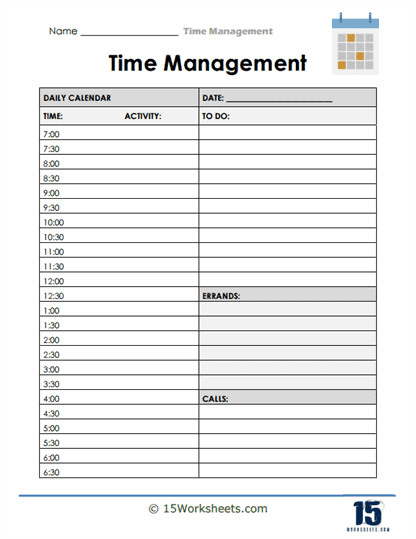Time Management Worksheets
All About These 15 Worksheets
Time management worksheets help individuals, particularly students, organize their tasks, prioritize activities, and better understand how they spend their time. These worksheets generally encourage users to reflect on how much time they allocate to daily activities such as schoolwork, hobbies, family time, and rest. By visualizing their time use, individuals can identify inefficiencies and make adjustments to improve productivity, reduce stress, and maintain a healthy balance between various commitments. Time management worksheets often incorporate exercises that promote planning, goal-setting, and the ability to track tasks over different timeframes, ranging from daily to yearly plans.
It is clear that these worksheets cover a variety of exercises designed to target different aspects of time management. One common type of exercise asks users to log the actual time spent on various activities and then compare it to the ideal time they would like to spend on each. This approach helps children (or other users) identify gaps in their current schedule and set realistic goals for how they would prefer to manage their time. It also encourages reflection on the importance of balance, showing users how they might distribute time among different areas such as homework, studying, personal care, social time, and hobbies.
Other worksheets, such as the daily, weekly, monthly, and yearly to-do lists, help individuals break down their responsibilities into more manageable sections. These worksheets prompt users to plan activities across different time scales. For example, the “Daily To Do” lists are ideal for planning immediate tasks, while the “Yearly To Do” exercises help with long-term goal setting. The monthly and weekly sections provide intermediate milestones that can bridge the gap between short-term daily activities and long-term yearly plans. Such breakdowns are highly effective for teaching students to prioritize and gradually work toward bigger goals by tackling smaller tasks along the way.
Another form of exercise focuses on prioritization and distinction between “must do” and “would like to do” tasks. These worksheets ask students to rank or categorize tasks according to their importance or urgency. By separating essential activities from optional ones, students learn how to focus on the most critical tasks first, while still leaving room for leisure and personal interests. This type of exercise encourages mindfulness and helps students avoid procrastination by organizing their time around the most productive or impactful activities.
Some worksheets allow students to allocate time specifically for different subjects or extracurricular activities. These sheets typically ask the user to estimate how much time they spend on subjects such as math, science, or homework, allowing them to gauge whether they are dedicating adequate time to academic success. This is complemented by sections that focus on unstructured time, such as time spent with family or in extracurriculars, ensuring that students not only focus on school but also maintain a balanced lifestyle that includes social and recreational time.
Worksheets that include a pie chart or graphical representation of time usage are particularly engaging and provide a visual understanding of time allocation. By converting the time spent on various activities into a pie chart, students can easily see which activities take up the most time and whether that distribution aligns with their goals. Visual tools like these help children develop an intuitive understanding of time management and make it easier to identify areas where adjustments are needed.
Helping Kids Improve Their Time Management Skills
Helping children improve their time management skills is essential for their success in school and personal life. It teaches responsibility, enhances productivity, and reduces stress. Time management involves organizing tasks, setting priorities, and using time efficiently. While it may seem like a skill more suited for adults, children also benefit greatly from learning to manage their time well, especially as they balance schoolwork, extracurricular activities, and leisure. By guiding them through practical steps, parents and educators can instill habits that will benefit children in the long run.
The first step to improving time management skills in kids is teaching them the importance of planning. Encouraging children to use planners or calendars helps them visualize their tasks and deadlines. Whether it’s writing down homework assignments, after-school activities, or playtime, having a plan provides structure and gives them a sense of control. Parents can model this behavior by planning family activities or sharing how they manage their own time. When children see adults actively using planning tools, they are more likely to adopt these practices.
Another key aspect of time management is setting priorities. Children often feel overwhelmed when they have too many tasks at once, especially with homework, chores, and hobbies all demanding their attention. Teaching kids how to identify the most important tasks and tackle those first is essential. This can be done by using tools like a “priority list” or by color-coding tasks based on urgency. By learning to break down big tasks into smaller, manageable steps, children can avoid procrastination and feel a sense of accomplishment as they complete each one.
Children need to learn how to minimize distractions. In today’s digital world, distractions like video games, social media, and TV can easily derail time management. Helping kids understand how to create a distraction-free environment when doing homework or other important tasks is critical. Setting time limits for non-essential activities and teaching them to take scheduled breaks can help strike a balance between work and play. Parents can also create a designated study space that is free from distractions to reinforce this habit.
Building time management skills in kids also involves teaching them to be flexible and adapt when things don’t go as planned. Life is unpredictable, and sometimes schedules can change or tasks take longer than expected. It’s important that children learn how to adjust their plans without feeling frustrated or defeated. Parents can encourage this flexibility by helping kids review their plans at the end of the day and discussing what worked or what needed improvement. Over time, this reflective process will allow children to become more resilient and better equipped to handle changes in their schedule.

